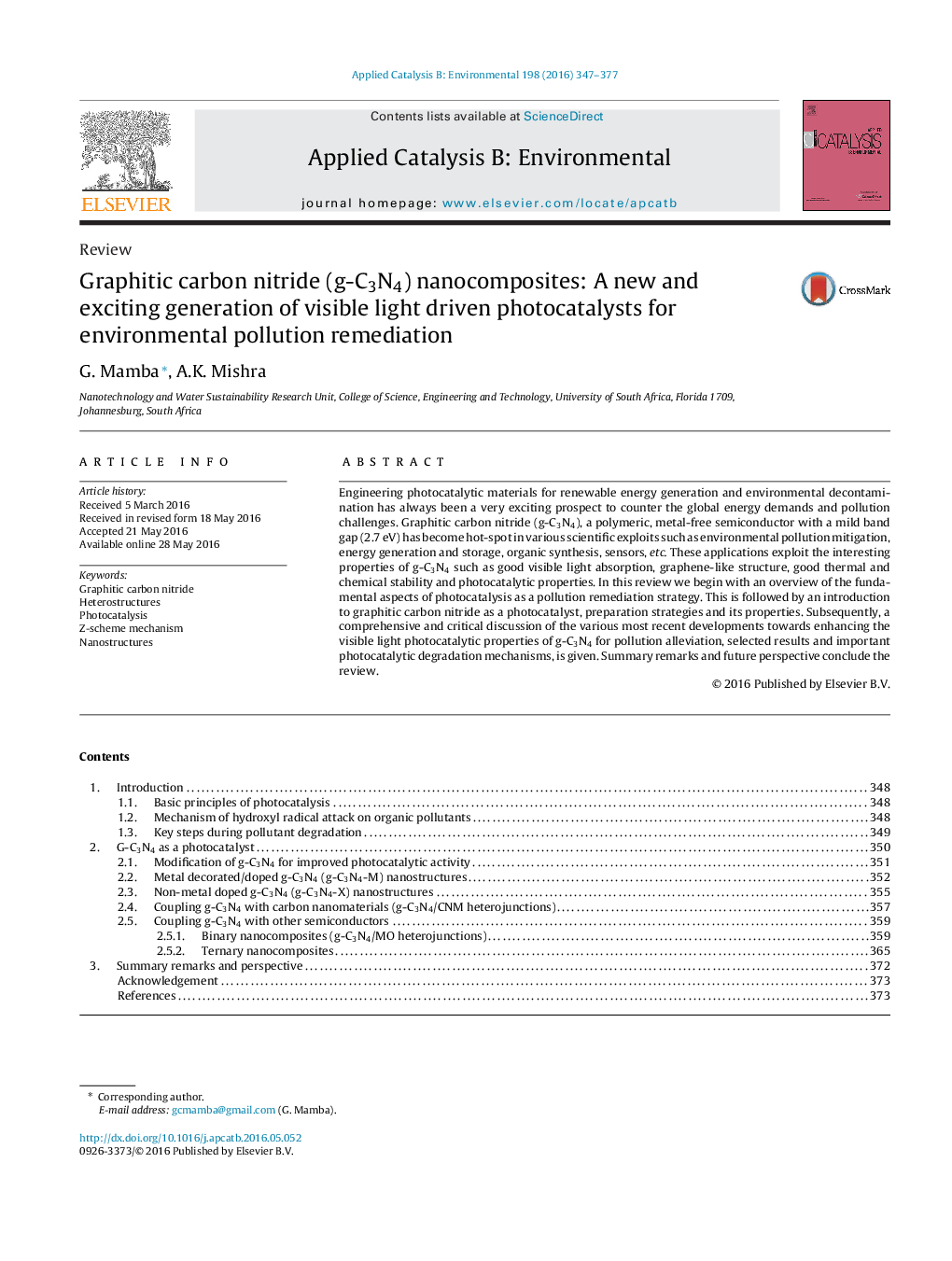| Article ID | Journal | Published Year | Pages | File Type |
|---|---|---|---|---|
| 44745 | Applied Catalysis B: Environmental | 2016 | 31 Pages |
•Modification of g-C3N4 yield multifunctional materials whose mechanism of action is based on synergy.•Graphitic carbon nitride heterostructures show improved photocatalytic properties than pristine g-C3N4.•Heterojunction and Z-scheme mechanisms are the prominent electron transfer mechanisms in g-C3N4 heterostructures.•Multicomponent semiconductor/g-C3N4 nanocomposites show higher activity than the individual semiconductors.•Incorporation of magnetic nanoparticles in g-C3N4 heterostructures enables easy separation using a magnetic field.
Engineering photocatalytic materials for renewable energy generation and environmental decontamination has always been a very exciting prospect to counter the global energy demands and pollution challenges. Graphitic carbon nitride (g-C3N4), a polymeric, metal-free semiconductor with a mild band gap (2.7 eV) has become hot-spot in various scientific exploits such as environmental pollution mitigation, energy generation and storage, organic synthesis, sensors, etc. These applications exploit the interesting properties of g-C3N4 such as good visible light absorption, graphene-like structure, good thermal and chemical stability and photocatalytic properties. In this review we begin with an overview of the fundamental aspects of photocatalysis as a pollution remediation strategy. This is followed by an introduction to graphitic carbon nitride as a photocatalyst, preparation strategies and its properties. Subsequently, a comprehensive and critical discussion of the various most recent developments towards enhancing the visible light photocatalytic properties of g-C3N4 for pollution alleviation, selected results and important photocatalytic degradation mechanisms, is given. Summary remarks and future perspective conclude the review.
Graphical abstractIllustration of the numerous applications of g-C3N4 heterostructures.Figure optionsDownload full-size imageDownload as PowerPoint slide
